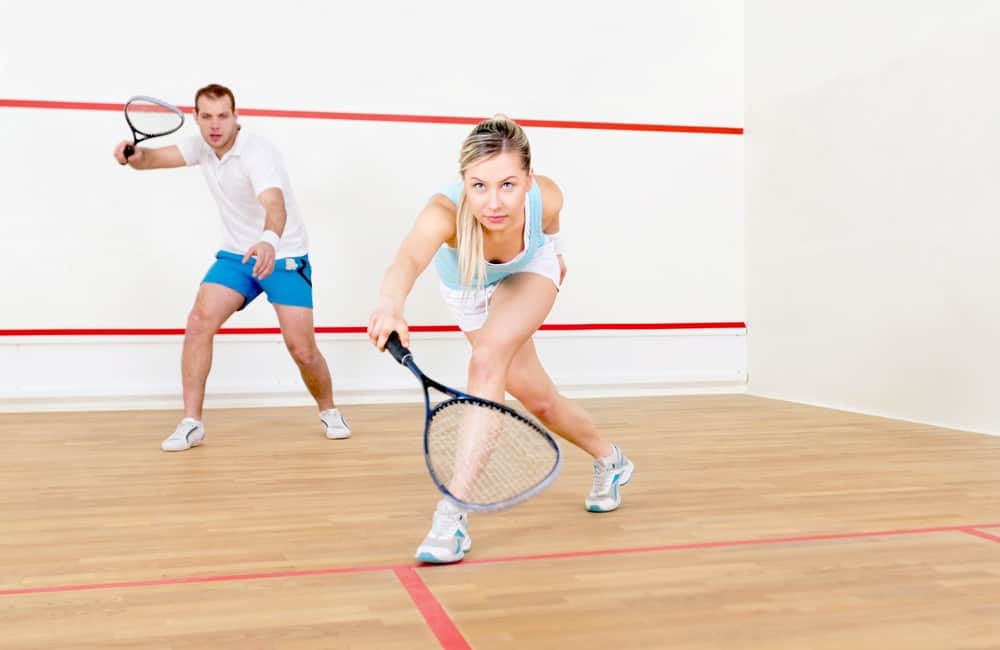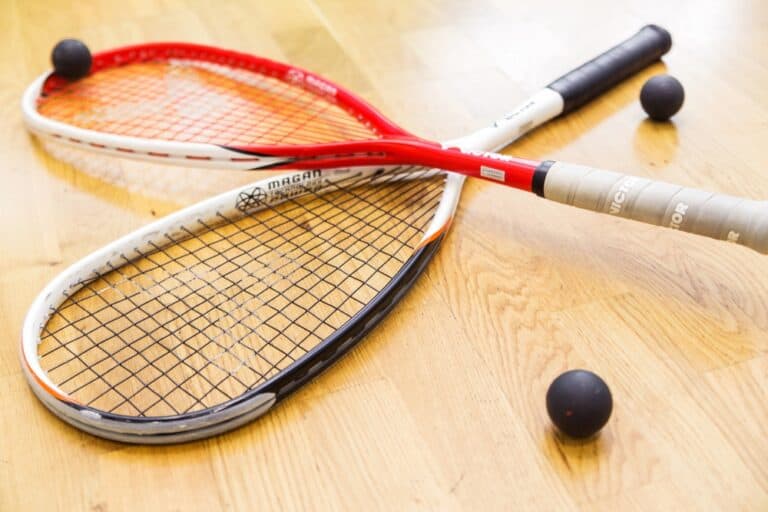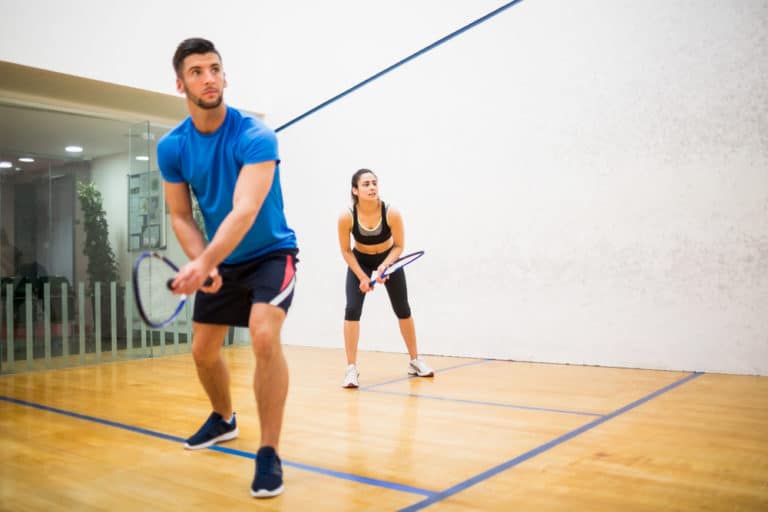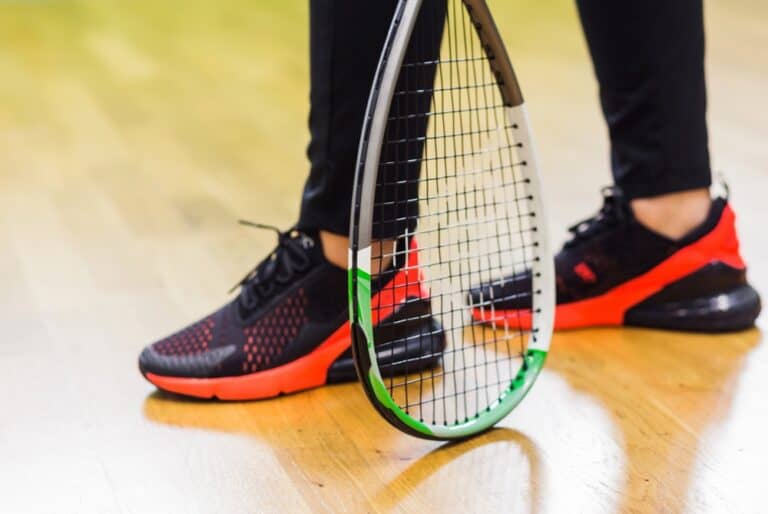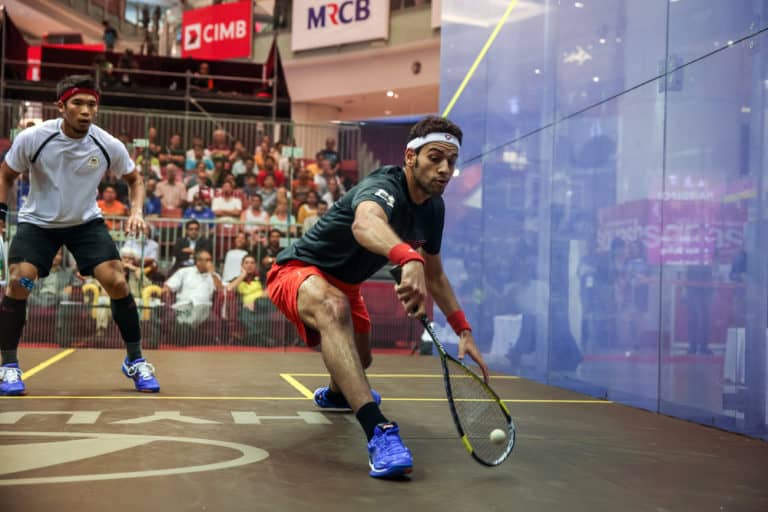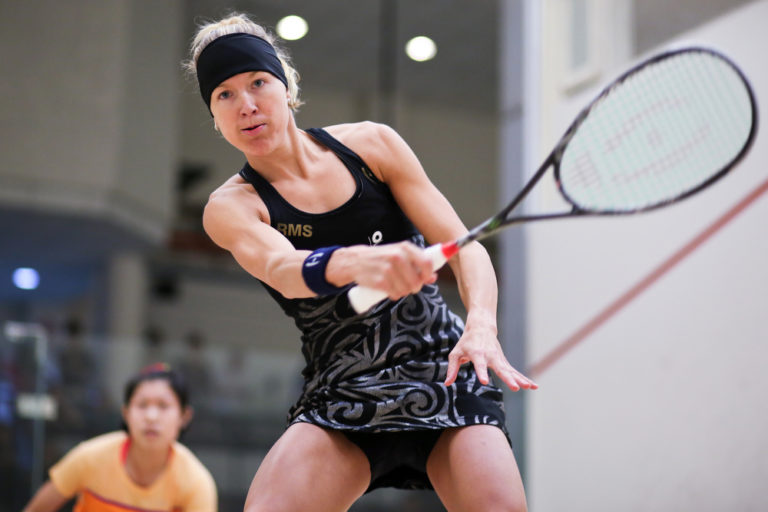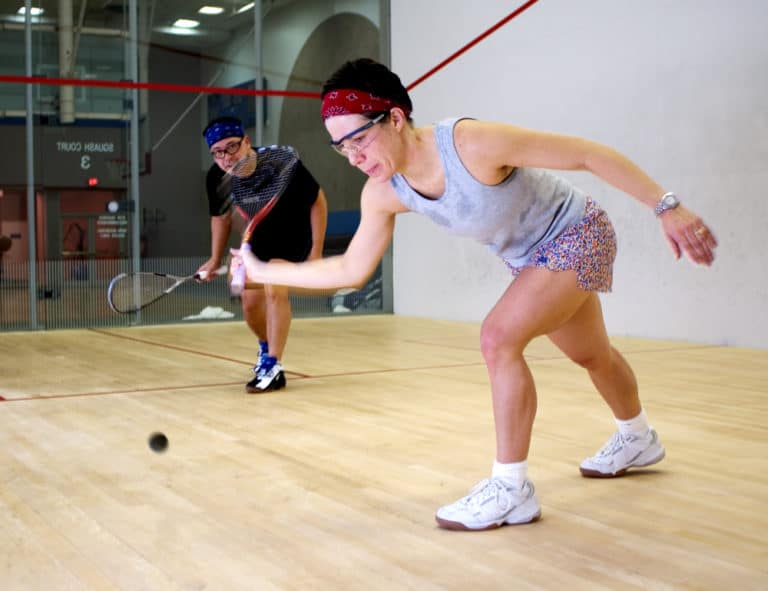What Skills Are Needed For Squash?
Squash is a prevalent racket sport enjoyed on both highly competitive levels and for recreational purposes. The game involves two players, usually, but there are times when there can be four people on the court. The primary aim of squash is to hit the ball so that your opponent cannot return the shot, but what makes a good squash player, and what are the skills involved?
The skills required in squash are to have cardiovascular and muscular endurance, flexibility, strength, speed, stability, agility, and mental toughness. Additionally, you must grip the racket correctly while you move around the court and be attentive and decisive in how you play.
Many skills make up your squash arsenal, and being proficient in only one or two areas is not enough; you need to attempt to garner improvement in all the skills we shall discuss. So you want to know what skills you will need to be able to play squash, and you have certainly come to the right place as we shall break down all you need to know before deciding to take up the sport.
The Skills That Are Needed To Play Squash
As of 2003, Forbes declared squash as one of the world’s healthiest choices, and it came out above various other sports such as swimming which you may assume are more strenuous. And although it is a high-intensity sport, it can be played purely for leisure and is an excellent way to increase your fitness levels and even lose weight if these are your goals.
One spectacular thing about squash is that you can take it up at almost any age, and it is suited to all body types. Some primary components of squash include cardiovascular and muscular endurance, flexibility, strength, speed, stability, agility, and mental toughness. There are overarching aspects and what we shall be examining are things that help to improve all these.
The Physical Demands Of Squash
This is likely the primary thought that brought you here, as you may be wondering what you will need to physically be capable of to do well in this sport or at least play on a level where you enjoy the game. As we have mentioned, there are key traits you either need to possess or be able to develop to play squash. Overall, you want a good physical foundation on which to build.
Suppose you are not able to meet the physical demands of the sport. In that case, you will find that the other aspects of your game, such as the technical and tactical areas, will diminish, and tiredness and fatigue will ultimately get the better of you. You will either lose the match or simply not enjoy your session on the court.
A proper physical training program is paramount in preparing an athlete to perform optimally in any given sport. Still, squash being a high-intensity sport makes it much more vital. So you need a program to ensure that you develop in all the avenues mentioned, such as strength, speed, and agility.
Having A Good Grip Is Essential For Squash
One thing that often occurs, especially if someone starts playing squash and does not have a coach or someone with experience, is that they could develop bad habits in terms of gripping the racket. From the start, you want to hold the racket in a way that there is a “V” formed between your thumb and pointing finger.
The rest of your fingers wrap around the handle, and you want to hold the racket with a firm grip, but not too hard where the movement of your wrist is restricted. Another reason not to hold too tightly is that you may put unnecessary strain on your wrist.
You Need A Good Stance For Squash
What you will see from beginners at times is that they want to play squash like you would in tennis, where you often face forward. In squash, whenever you hit the ball, your shoulders should be facing the side walls of the court (obviously, there will be times where this “rule” does not apply, such as when playing off the back wall). You do not want to over-rotate as this will cause you to drag the ball.
Effective Movement On The Court
When it comes to getting on the court and playing, you will find, especially in the beginning, that there is a lot of running around on the court. As you develop your game, you will become more proficient at holding the “T”, but initially, you will see yourself sprinting after the ball. With this comes the need for speed and the ability to stop, align and play the shot effectively.
You will also find you have to alter direction a lot, which will take some getting used to, but with repetitive practice, you will begin to learn how to move around more effectively and in a way that expends less energy. Initially, you will likely miss shots that advanced players can lunge for, but your flexibility will increase with practice.
Having A Proper Swing
Squash requires very precise and well-played shots, and to do so, you need to have the ability to swing the racket correctly. Your two basic forms of a swing are the forehand and backhand shots, but many others require you to alter your swing path and how you strike the ball.
Over time you will learn to hit the ball flat, and some players can even place a slight overspin on the ball, making it skip and ultimately die off the back wall. You also need to have power in your swing and ensure that your attacks are firm so that your opponent is caught off guard or has less time to reach the ball.
Perception And Anticipation
There are two key components that you will need to be perceptive of and be able to anticipate: the first is how the ball will bounce and what its ultimate trajectory will be, and the second is getting to know what your opponent is likely to do next. If you can anticipate their shots and where they are likely to play the ball, you have a leg up on them.
When you are a novice or an absolute beginner, your main goal is to keep the ball in play, as you will unlikely be as intuitive as more advanced players. However, once you progress, you will learn what people do when confronted with certain shots, and you can preempt what they are likely to do next.
Decision-Making
This skill follows on from the previous point and is based on anticipating what is likely to happen next in the game and then getting yourself in a suitable position to make the return shot. You need to be observant and aware of your opponent’s cues and use this to your advantage. Suss them out as the game continues and learn their habits and preferred shots.
Next, you need to choose how you intend to return the ball to them; obviously, you want to set it up so that they cannot play the ball, or you can play something that will give you time to get into a more desirable position. You also want to gauge how hard or soft you want to play the ball and at what point you intend to play it, i.e., before it touches the wall or once it comes off.
Reaction Speed
Part of making your decision is the time that it takes to do so. You want to reach a point where your reactions to what you intend to do next and how you plan on playing the ball become fluid. Beginners often have a slower reaction time, which usually results in shorter rallies as they are not quick enough to make their decisions and then react appropriately.
The Ability To Be Deceptive
You want to try and fool your opponent into thinking you will play the shot in a particular manner but then alter that as soon as you strike the ball. You must be careful, though, and change how you go about deceiving them, as they may get used to the types of shots you fake.
So mix things up, constantly consider how you can best trick them, and ensure they cannot anticipate your next move. Another component that will aid you is how hard you intend to strike the ball. This is an excellent way of confusing your opponent; however, it can be challenging as it is difficult to go from pretending to play a drop shot, for instance, and actually driving the ball.
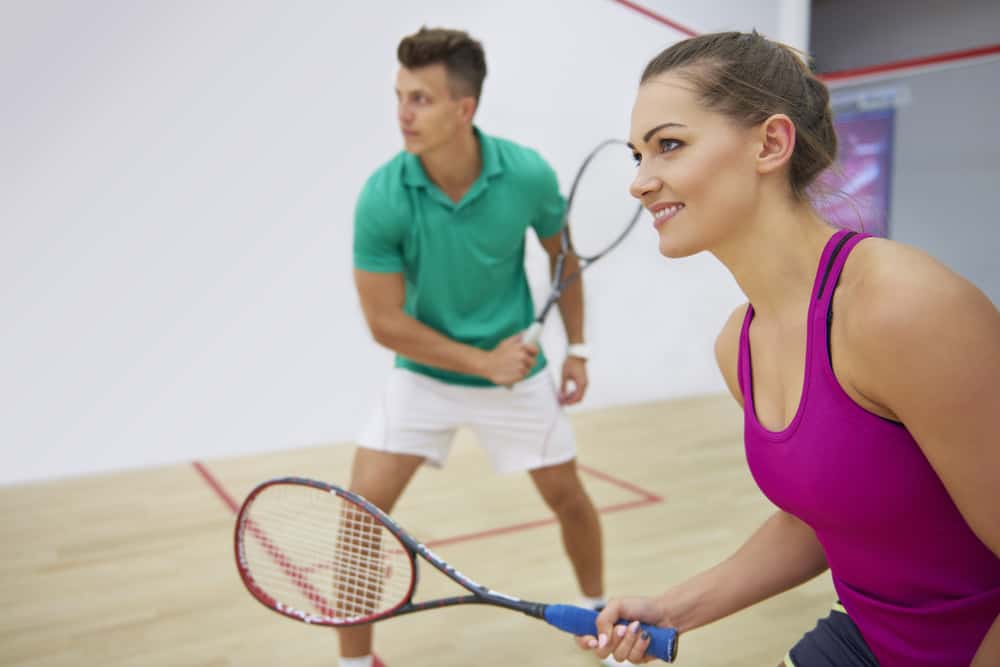
Things To Practice For Squash
So now that you know what the required skills are for squash, we can look at what to expect once you start getting onto the court. It will make you sweat for sure, and you will be pushed both physically and mentally by this sport, but as mentioned earlier, it is one of the healthiest and most beneficial ones in which you can engage.
You Need To Practice Hitting The Ball
This sounds obvious, but there is more to squash than simply getting the ball to hit the front wall and bounce back. You want to start by focusing on perfecting your forehand and backhand and learning how to control the ball properly and where it strikes the wall. Attempt to hit specific spots on the boundary walls and see the results and how they will work when playing someone.
Practice Hitting The Sidewalls
You have four walls surrounding you, and you ought to learn how to play the ball off all of them. The secondary walls after the front one are the side walls, and with practice, you will learn how to play shots that your opponent will not be able to counter. Additionally, put in the time to learn how to play off the back wall, as you may find yourself in this situation when playing a game.
Always Try To Return To The “T”
We shall get into this in more detail shortly, but after hitting each shot in a rally, try to make your way back to the “T” and, if possible, ensure that you dominate this space as it is where you want to be as it allows you to reach all areas of the court with greater ease. Players who control the center of the court often tend to be the ones who win the game or match.
Research New Drills And Techniques
One thing is for sure in all aspects of life: you can always learn something new, even if you have vast experience in that particular field or area. So do your homework and watch other players to get ideas on drills you can do during practice and techniques and tactics that can be used in-game.
Discovering How To Dominate The “T”
The “T” is the centerpiece of the court and is the point around which the game revolves. You always want to return to this spot as soon as possible as it will give you command of the court; if you are stuck at the back of the court, for example, your opponent will simply play a drop shot, and you will lose the point. And this can be avoided by constantly returning to the prime spot on the court.
You do not want to be too hasty with your shots purely to get back to the “T” in time, but you also do not want to delay that transition. So get to the ball and make sure you have a firm footing and are steady in your stance to play the shot, then immediately make that move back to the “T”. What you ought to do once you have hit the ball is ensure the movement back, is fluid and precise.
Shots in the front corner are harder to recover from as you need to wind your way back to the “T”, but if the ball is played to the back, you can make a smooth transition and easily turn out of the shot to get back to where you want to be.
Conclusion
As you can see, there is an array of skills that one needs to garner to play squash, but if you do not have them, this is fine, as you will gradually develop them over time. Apart from cardiovascular and muscular endurance, flexibility, strength, speed, stability, agility, and mental toughness, there is also the need for decisiveness, quick reactions, and the ability to deceive opponents.
References
- https://www.kreedon.com/how-to-play-squash/?amp#
- https://www.squashplayer.co.uk/nicols_top_tips.htm
- https://psaworldtour.com/news/view/5717/squashskills-blog-decision-making-in-squash
- http://www.serioussquash.com/2015/07/advanced-skill-development-for-elite.html
- https://squashskills.com/blog/-/the-4-crucial-components-of-the-competitive-squash-player-278/
- https://www.rookieroad.com/squash/list-squash-skills/
- https://sportscentaur.com/101-squash-tips-for-beginners/

